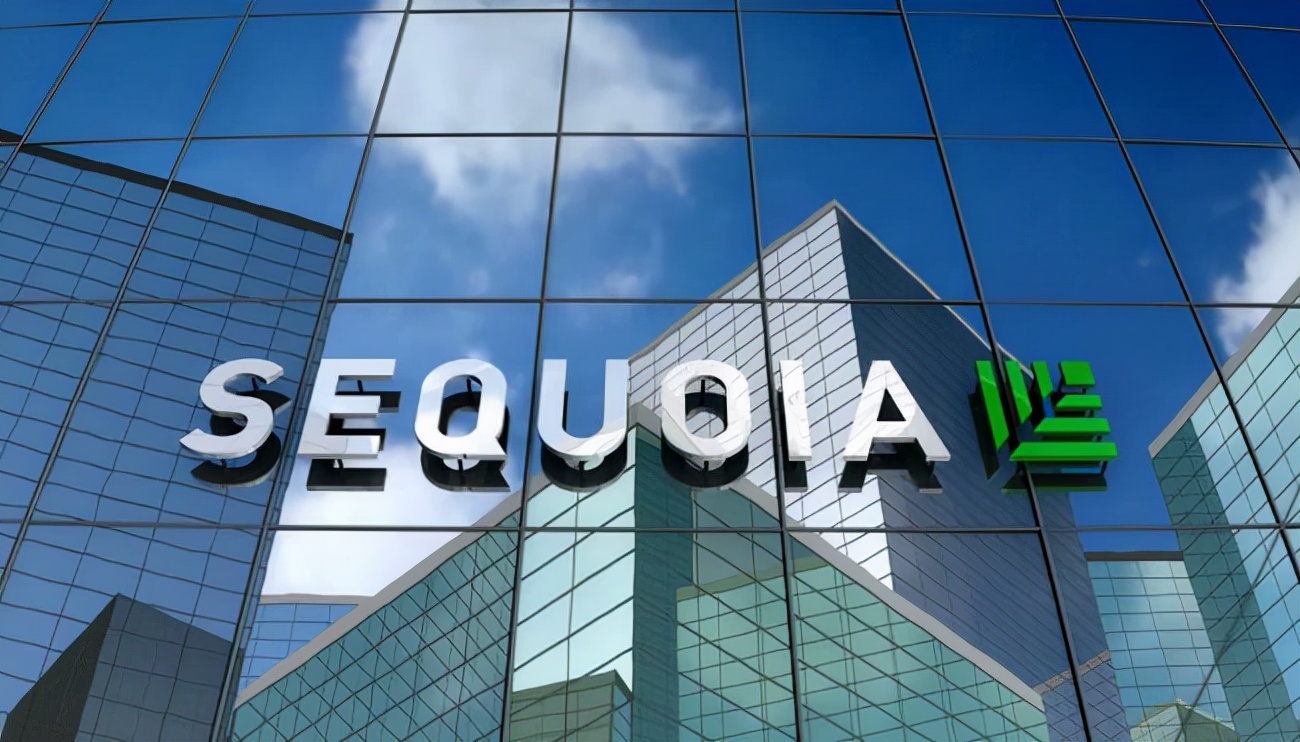On June 6th local time, Sequoia Capital announced in an open letter that it will completely separate its regional funds in the United States, Europe, China, and India/Southeast Asia, allowing each to operate independently and conduct business under different brands. This change will be completed no later than March 31, 2024.
The letter was co-signed by Sequoia Global Head Roelof Botha, Sequoia China Founder Nianpeng Shen, and Sequoia India Head Shailendra Singh.

After the split is completed, Sequoia Capital US and Europe will continue to use the name “Sequoia Capital,” Sequoia India/Southeast Asia will adopt a new brand name “Peak XV Partners,” and Sequoia China will continue to use the Chinese brand name “Sequoia” and adopt the pinyin “HongShan” as the English brand name.
Sequoia stated in a declaration that this decision was made because in the current environment, “how to manage and operate a decentralized global investment business has become increasingly complex and challenging.” Sequoia “needs to further embrace a local-first strategy to achieve its mission in each region and maintain a leading position.” “The flexibility brought by different brands can create more value for founders and LPs served by each region.”

“Decentralized Management Model of Global Investment Business Encounters Obstacles, Sequoia Fully Embraces Localization”
According to Sequoia China's public letter, since its establishment, Sequoia has been committed to working with extraordinary founders to help entrepreneurs build great companies with a long-standing foundation. 18 years ago, in order to create and seize more opportunities in emerging markets, Sequoia China was established, followed by the establishment of Sequoia India/Southeast Asia.
In terms of overseas business management, Sequoia has adopted a unique and unconventional operation model at the time, establishing teams in different regions that are rooted locally, deeply understand the local market and ecosystem, and each region has independent ownership and investment decision-making rights. In the early stages of development, Sequoia shared best practices with regional teams and helped to lay a solid foundation; at the same time, some back-office functions were selectively centralized globally to ensure consistency in the operation of these functions in each region.
Establishing local investment teams, focusing on serving local entrepreneurs, and prioritizing local needs are the core elements of Sequoia's success in different regions around the world.

To date, Sequoia's business entities and teams in various regions have become leaders in their local markets. However, at the same time, managing and operating a decentralized global investment business has become increasingly complex and challenging.
For example, the deeper localization development in each region has gradually made the global centralized operation model of some back-office functions a burden rather than an advantage. In addition, as the companies invested by Sequoia in different regions go international and compete for industry leadership on a global scale, it is inevitable that they will encounter some competition with each other. The fact that the same brand is shared by all regions of Sequoia will bring some troubles to these founders and member companies.
Sequoia China stated that in the face of these complexities, Sequoia needs to further embrace a local-first strategy in order to achieve its mission in each region and maintain a continuous lead.
Red shirts thoroughly embrace localization
“The three major markets are becoming more differentiated, and Sequoia USA continues to face ‘adverse water'”
During their development, the three major markets have each formed their own characteristics in investment strategies and management models. Sequoia China's investment direction is more extensive and diverse, not only including the technology industry but also covering areas such as healthcare and traditional consumption, which are less involved in the other two regions. Sequoia China has also established a new infrastructure fund to invest in the infrastructure of China's new economy industries and has begun to develop mergers and acquisitions investments in recent years. Sequoia India/Southeast Asia and Sequoia Europe/America have also developed a series of unique operational methods and business structures that are more targeted to their respective local markets.
At the same time, as global economic and geopolitical uncertainties have continued to rise in recent years, the performance of the same brand in the three markets has also become differentiated. Especially in the past year, affected by multiple factors such as the Federal Reserve's interest rate hikes and geopolitical conflicts, Sequoia Europe/America funds have encountered continuous setbacks. Bota, who succeeded Doug Leone as the global senior executive partner of Sequoia Capital in April 2022, is leading the Sequoia Europe/America funds through a difficult transformation.

In the fall of 2022, Bota's investment of $800 million to Musk for the acquisition of Twitter through Sequoia's multiple funds was considered a major failure. Due to the sharp decline in advertising revenue, Twitter's internal valuation has decreased by about half compared to before the acquisition. The bankruptcy of FTX also caused Sequoia US to suffer huge losses, turning its initial investment of $214 million into nothing. As a result, Sequoia rarely apologized to LPs for the mistake.
In October 2021, Sequoia announced the establishment of a single, perpetual fund called the Sequoia Capital Fund in the US and European markets, and no longer set a duration for it. The fund has become the world's first truly full-chain cross-fund that spans from seed-stage startups to publicly listed companies.
Relying on this move, Sequoia has innovated the financing model of the venture capital industry for 50 years. The fund is composed of Sequoia's selected evergreen companies' public market positions, and most of the publicly listed company stocks held by Sequoia in the US and European markets have been included.
However, in the 2022 tech stock sell-off, Sequoia US's public investment portfolio evaporated tens of billions of dollars in value. As of May 2 of this year, the five major positions of the Evergreen Fund, Snowflake, Unity, DoorDash, Robinhood, and UiPath, have all plummeted compared to their IPO prices. Over the past year, some LPs have also expressed dissatisfaction with Sequoia Evergreen Fund's strategy of holding publicly listed stocks for a longer period. Some even criticized Bota's leadership of Sequoia for the reform of the fund structure as “untimely”, saying that he was “blinded by the illusion of the bubble.”

“Under the background of nearly exhausted investment by U.S. venture capital in China, Sequoia China operates independently with both opportunities and challenges coexisting.”
For Sequoia China, operating entirely as an independent brand may imply the coexistence of opportunities and challenges. Since its establishment in 2005, Sequoia China has achieved brilliant success by betting on companies such as Meituan, Pinduoduo, and ByteDance in their early stages. According to PitchBook data, in addition to ByteDance, Sequoia China's investment portfolio includes at least eight Chinese non-public companies with a paper valuation of over $10 billion, including Ant Group, Shein, J&T Express, Yuanqi Forest, Guazi Second-hand Cars, and Lalamove.
The fragmentation of the three major markets has intensified
Last year, Sequoia China raised $9 billion through several funds, half of which came from American investors, including the largest public pension fund in the United States, the California Public Employees' Retirement System (Calpers), the Massachusetts Pension Reserves Investment Management (MassPRIM), as well as the Canadian Quebec Savings and Investment Group (CDPQ) and the Canadian Pension Plan Investments (CPP Investments).
The large base of American investors has made Sequoia China more cautious in its investments in some key areas, such as the semiconductor industry. It is reported that last year, Sequoia China began to consult external policy experts before making such investments, and it will continue to do so after the separation is completed.
Some venture capitalists believe that considering the achievements that Neil Shen has led Sequoia China to in the past few years, Sequoia China, which will operate as an independent brand in the future, will not have too much difficulty in raising funds. However, some also believe that Neil Shen, who no longer represents the Sequoia Global brand, may face certain challenges in raising funds from foreign investors.

Before Sequoia officially made the decision to split, Sequoia China, like many other American venture capital (VC) funds operating in China, faced a significant slowdown in investment. Crunchbase data shows that the number of venture capital deals by American investors in China reached a four-year low in 2023. The number of transactions by American VCs in China were 345 in 2019 and 315 in 2020, rising to 426 in 2021. This number dropped to 283 in 2022. In the first four months of this year, American investors have only participated in 17 venture capital deals with Chinese tech startups, less than one-fifth of last year's average. American investors, including GGV Capital, BlueRun Ventures, GL Ventures, and GSR Ventures, have all significantly slowed down their investment pace. Sequoia China has made over 400 investments in Chinese companies since 2019, but only completed 19 in the first four months of this year.
The main backdrop for the sharp decline in American VC investment in China is the ongoing rise in global economic uncertainty, as well as investment restrictions faced by American investors in areas such as semiconductors, artificial intelligence, and quantum computing. Against this backdrop, the seemingly sudden announcement of Sequoia's split was not a last-minute decision.
Bota said in an interview, “Brand splitting is a very complex decision. For many years, Sequoia has repeatedly evaluated the costs and benefits of this decision, as well as whether this arrangement is suitable for Sequoia's structure. Sequoia realized that the time for splitting has come.”

Please provide the content you would like to be translated into English.





